Chester H. Pond
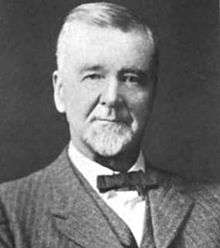
Chester H. Pond (March 26, 1844 – June 11, 1912) was an American inventor. He invented the first electrical self-winding clock, which could be electrically synchronized with a master clock—and helped found the Self Winding Clock Company as a result. He invented many devices used in telegraphy. In later life he was a railroad developer. He also founded the town of Moorhead, Mississippi.
Early life and work
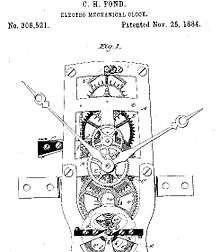
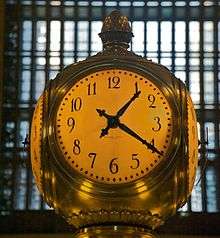
Chester Henry Pond was born at Medina, Ohio on March 26, 1844, to Henry Nelson and Mary Jerusha (Castle) Pond. He was a descendant of Samuel Pond who emigrated to America from England in the early seventeenth century, and settled in Connecticut. Pond's paternal family line is Samuel, Philip, Bartholomew, Beriah, Isaac Johnson and Henry Nelson Pond (father). His maternal grandfather was Deacon Samuel Castle, known in New York state as an expert in composing religious songs. He had an older brother, Chauncey Northrup Pond (1841–1920), and a younger sister, Celia E Pond (1846–47).[2]
Pond attended public schools in York, Brunswick and Oberlin in Ohio. After receiving his preliminary education he took employment at a business in Oberlin. There he developed an interest in telegraphy and took some courses in that field in Cleveland. He received a college loan for further education that he could repay after he was employed. During the American Civil War, Pond enlisted in the U. S. military telegraph service. He rose to the rank of colonel.[2]
Pond returned to Oberlin after the war, and was asked to organize a telegraph department at the Oberlin College.[2] He founded the Oberlin Telegraph Institute with his older brother Chauncey N. Pond.[3] In 1884, while at the Institute, Pond invented the first electrical self-winding clock.[4][5] It could be electrically synchronized with a master clock. In 1886 New York City set up 50 of these movements of subsidiary clocks in a system that was synchronized every hour from a master clock.[6]
The electro-mechanical clock functioned with a small winding spring that was a little larger than the mainspring of a watch. This spring was kept at a uniform tension and responded to the hour-wheel. It took six seconds to rewind fully. It did this with no interruption to the time. The winding spring was kept at a tension that would only run the clock for one hour and then it would be rewound.[7]
Pond had an office in New York City to oversee his patent operations. He was a trustee for over a decade of the Oberlin Conservatory and Oberlin College and gave them a set of his synchronizing clocks.[2] He was one of the founders of the Self Winding Clock Company of New York City. He also was a principal in the Gamewell Fire Alarm-Telegraph Company.[8]
Many of his inventions pertained to electrical clock improvements, electrical devices or telegraph equipment improvements; among them were "Circuit-controller for self-winding clocks", "Improvement in automatic fire-alarm boxes", "Improvement in fire-alarm-telegraph instruments", "Insulating-compounds for telegraphs", "Locks for circuit-closers", an "Electrical indicator", and a "Secondary electric clock movement". See Google Patents.
Later life
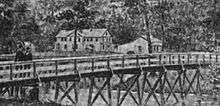
Pond founded the town Moorhead, Mississippi in 1898.[9] He developed it as an alternative to the sharecropping system that was widely used the South and had led to the demoralization of African-American farmers.[10] He provided work and established local industries so that even people on a low income could purchase a home. He spent the last two decades of his life building mills, railroads, and schools at his new town.[11] One of the schools he founded with his wife was the Almeda Gardner Girls' Industrial School on a ten-acre site of land he donated in 1892. The school was designed for young adults.[12]
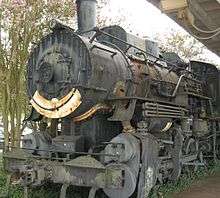
Railroads
Pond developed the Yazoo Delta Railroad in 1897 from the Moorhead Improvement Company, initially with 20 miles of track. This made Moorhead an important business stop on the Southern Railway in Mississippi.[13] He planned a railway that was to run from Memphis to Pensacola, but died before completing it. These railroad projects brought him in front of businessmen like Stuyvesant Fish of the Illinois Central Railroad from whom he was able to raise large sums of money for his enterprises.[2]
Family
Pond married Almeda Mary "Lheda" Gardner, daughter of Reuben Gardner, in York, Ohio, on February 14, 1866. His wife was much involved as a co-founder of Moorhead. They had four daughters, of which the second (Mary) and third (Grace) died before adulthood. Their first daughter, Louise Carolyn, was born in New York City in 1867 and their fourth daughter, Alice Garner, was born in New York City in 1878. These daughters both grew to adulthood and had their own families.[14]
Death
Pond died at Moorhead on June 11, 1912.[4]
Gallery

References
Citations
- ↑ Pond, Chester H. "Electro mechanical clock". Patent # US308521 A. U.S. Government. Retrieved August 14, 2015.
- 1 2 3 4 5 J.T. White 1916, p. 160.
- ↑ Kornblith, Gary (2009). "Brief history of the Oberlin School of Commerce". EDG. Oberlin College Archives. Retrieved August 13, 2015.
- 1 2 J.T. White 1916, p. 161.
- ↑ Kane 1997, p. 605.
- ↑ Kane 1964, p. 165.
- ↑ Knowledge...: A Monthly Record of Science / Electro-mechanical clock, Wyman and sons, 1886, retrieved August 13, 2015
- ↑ Berly 1884, p. 223.
- ↑ Rowland 1907, p. 282.
- ↑ "Sharecropping and Prohibition". Amistad Research Center. Tulane University. 2009. Retrieved August 13, 2015.
- ↑ Richardson & Jones 2009, p. 4.
- ↑ Parsons 1894, p. 323.
- ↑ "Where the Southern Crosses the Dog". Mississippi Blues Commission. 2015. Retrieved August 13, 2015.
- ↑ Pond 1912, p. 53.
Sources
- Berly, Jules Albert (1884). J.A. Berly's Universal Electrical Directory and Advertiser. Wm. Dawson & Sons.
- Kane, Joseph Nathan (1997). Famous First Facts: A Record of First Happenings, Discoveries and Inventions in the United States, Fifth Edition. H. W. Wilson. ISBN 0824209303.
The first clock movement to be electrically wound and synchronized was made by Chester H. Pond in Chicago, IL, in the fall of 1884.
- Kane, Joseph Nathan (1964). Famous first facts: a record of first happenings, discoveries and inventions in the United States. H. W. Wilson.
In the summer of 1886, 50 of these movements were made and set up in New York City as a system. A high-grade master clock transmitted an hourly signal to the various self-winding or “subsidiary” clocks, correcting the hourly, and thereby maintaining in each clock location the same high degree of time accuracy that was inherent in the master clock.
- J.T. White (1916). "Pond, Chester Henry". The National Cyclopaedia of American Biography. J.T. White.
After 1866 Mr. Pond developed his principal inventions, among which were the union fire alarm system and the self-winding, electric clock, now in general use throughout the country.
- Parsons, E. L. (1894), The American Missionary, Volume 48 – Almeda Gardner Girls' Industrial School, American Missionary Association
- Pond, Chauncey (1912). "Chester Henry Pond". Oberlin Alumni Magazine. Oberlin College for the Alumni Association. 9.
- Richardson, Joe Martin; Jones, Maxine Deloris (7 June 2009). Education for liberation: the American Missionary Association and African Americans, 1890 to the Civil Rights Movement. University of Alabama Press. ISBN 978-0-8173-1657-0.
- Rowland, Dunbar (1907). Mississippi: Comprising Sketches of Towns, Events, Institutions, and Persons, Arranged in Cyclopedic Form. Southern Historical Publishing Association.